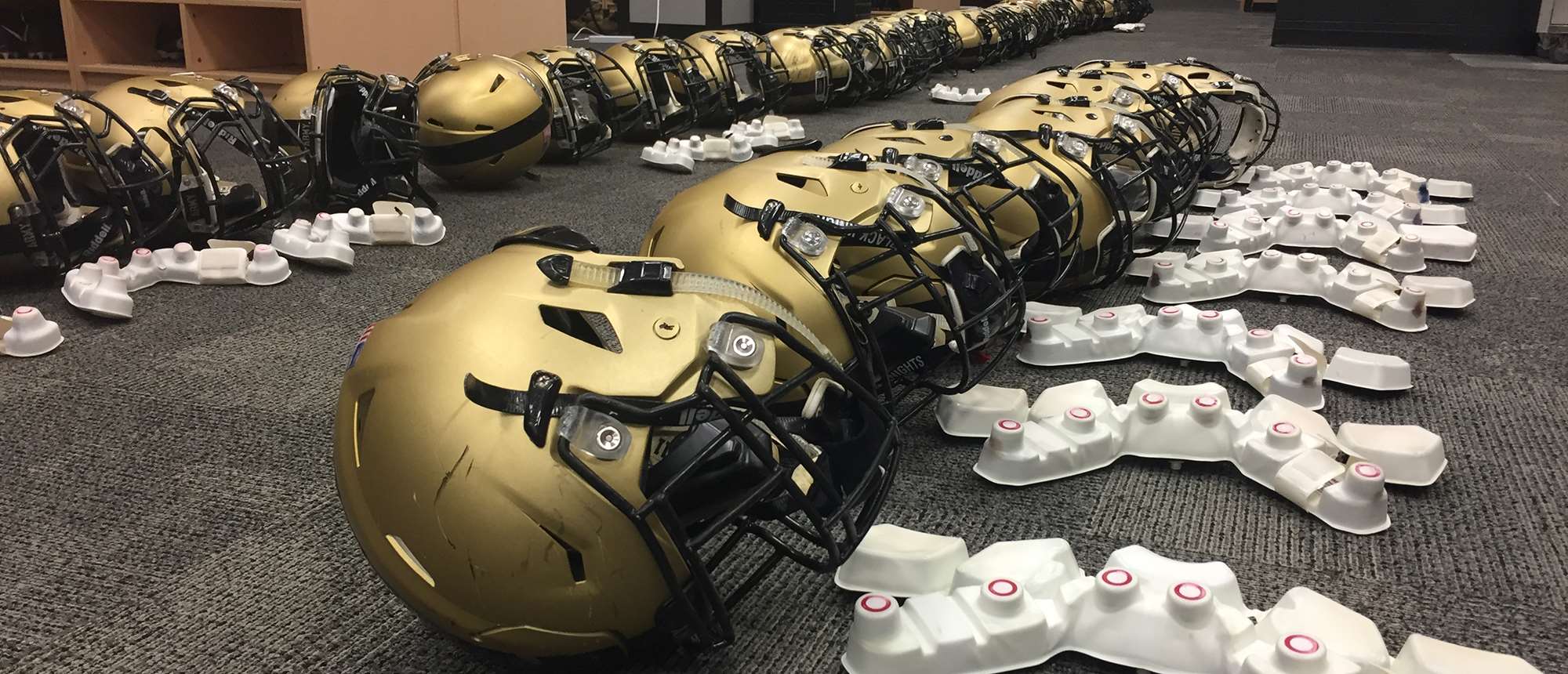Examining Concussion Incidence in College Football

NCAA football players were instrumented with the Head Impact Telemetry System (HITS) from Riddell. The in-helmet sensor arrays measure head impact frequency, location and magnitude during both practices and games.
Recent research from the Concussion Assessment, Research and Education (CARE) Consortium sheds new light on how to reduce the incidence of concussion and head impact exposure (HIE) in college football. Over the past few years, data from this study have resulted in incremental changes geared at improving the health and safety of athletes.
“It was really these data from the CARE Consortium that ignited the focus on football practice policy and guidelines,” says Michael McCrea, PhD, professor and eminent scholar, vice chair of research and co-director of the Center for Neurotrauma Research (CNTR) in MCW’s department of neurosurgery.
The study builds upon Dr. McCrea’s many years of research into how to most effectively detect, treat and reduce traumatic brain injuries and sports-related concussions. “In the last 10 years or so, the study of concussions has expanded to ask about the lower-magnitude impacts that contact-sports athletes sustain even in the absence of diagnosed concussion. That concept is captured in what is called ‘repetitive head impact exposure,’” he explains.
Dr. McCrea, Brian Stemper, PhD, associate professor of biomedical engineering at MCW and Marquette University, and their CARE Consortium colleagues examined the pattern of concussion exposure as well as repetitive HIE. Six Division I NCAA football programs participated in the study from 2015-2019, during which 658 collegiate football players were instrumented with head impact measurement technology from Riddell. “This was the largest and most comprehensive study of concussion and head impact exposure in collegiate football,” says Dr. McCrea.
The findings from the study were published in JAMA Neurology in February 2021. The results revealed that while football’s preseason accounts for only about 20 percent of the full season, 50 percent of concussions occurred in the preseason, and HIE occurring in the preseason was twice the proportion of that in the regular season.
“Because of how training and contact are approached in the preseason, there’s really a piling up of exposure and concussions in collegiate football during that time. A similar pattern can be seen in lower and higher levels of competition,” Dr. McCrea shares.
The study also examined the pattern of exposure in concussion across practice and games. Over five seasons, 72 percent of concussions and 67 percent of HIE occurred during practice.
“These findings offer a powerful opportunity to modify approaches to preseason training and football practices to keep players safer,” says Dr. McCrea. “By modifying practices and preseason training, football teams can greatly reduce the risk of injury and exposure for their players while still maintaining the competitive nature of game play. Through a combination of policy and education, similar strategies could be implemented to help prevent concussion and HIE in high school and youth football, too.”
“The NCAA is working within its framework, and changes are already in motion to reduce the incidence of concussion and exposure in college football players,” Dr. McCrea adds.
Philanthropic Support for the Center for Neurotrauma Research Builds on Excellence in the Department of Neurosurgery
Visionary MCW neurosurgery leaders pursue innovation that is transforming neurotrauma research and providing world-class care for spine and brain injury. The Center for Neurotrauma Research (CNTR) accelerates innovative research that has profound impact on patients regionally, nationally and internationally. To realize this bold vision, MCW aspires to endow a new chair in the department of neurosurgery and to invest in spinal cord and brain injury research.
“Philanthropy allows our early career scientists to get started. It also allows senior and more established researchers to conduct groundbreaking, novel work that might be considered high-risk by federal funding agencies,” says Dr. McCrea. “Philanthropy is critically important across the continuum of our ranks and also allows us to do innovative work that other institutions can’t do without that type of support.”
– Emily Marquardt



